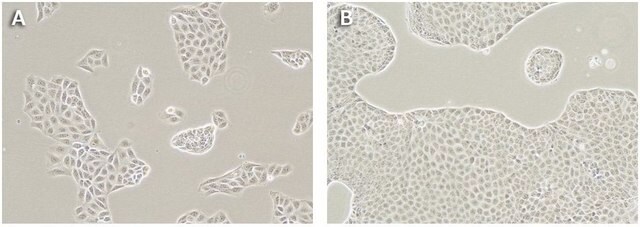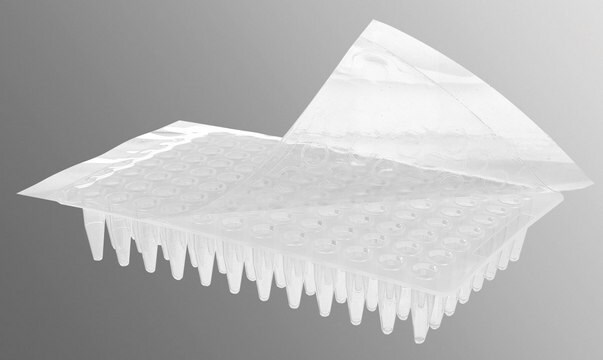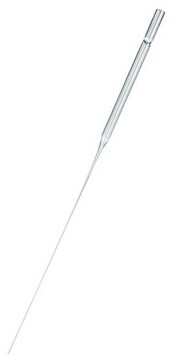MTOX1301Z
MDCKII canine MDR1 KO Cells
Sinónimos:
Canine cell line
About This Item
Productos recomendados
biological source
canine kidney (cocker spaniel)
usage
sufficient for 1 96-well plate(s) (or 24-well plate)
packaging
vial of 2 million cells
growth mode
adherent
technique(s)
cell culture | mammalian: suitable
drug transporter assay: suitable
application(s)
ADME/TOX
shipped in
dry ice
storage temp.
−196°C
General description
Application
These cells can be used in transwell permeability assays to measure the movement of substrates through the monolayer. Efflux ratios for test compounds can be determined using standard compounds as controls.
Features and Benefits
The canine MDR1 (cP-gp) efflux transporter gene has been effectively disrupted in both alleles. There is no expression of the cP-gp. Validation studies have shown no efflux of standard cP-gp substrates.
Quality
Legal Information
MDCKII subclone was originally isolated by Daniel Louvard, Institut Curie, Paris France.
References: Hansson, G.G., Simons, K and Van Meer G (1986) EMBO 5: 483-489, Louvard D (1980) PNAS 77; 4132-4136
Optional
Storage Class
10 - Combustible liquids
wgk_germany
WGK 2
flash_point_f
Not applicable
flash_point_c
Not applicable
Elija entre una de las versiones más recientes:
Certificados de análisis (COA)
¿No ve la versión correcta?
Si necesita una versión concreta, puede buscar un certificado específico por el número de lote.
¿Ya tiene este producto?
Encuentre la documentación para los productos que ha comprado recientemente en la Biblioteca de documentos.
Nuestro equipo de científicos tiene experiencia en todas las áreas de investigación: Ciencias de la vida, Ciencia de los materiales, Síntesis química, Cromatografía, Analítica y muchas otras.
Póngase en contacto con el Servicio técnico




